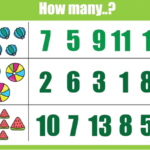how long is a softball game ?

The Duration and Dynamics of a Softball Game: Exploring the Length and Factors Influencing Gameplay:
Abstract:
Softball, a beloved sport enjoyed by millions worldwide, is a dynamic and engaging game that involves strategy, skill, and teamwork. This essay delves into the duration of a softball game, considering its various formats, factors that influence game length, and the overall experience for players and spectators. By examining game structure, regulations, and strategies, we gain insights into the factors that contribute to the varying lengths of softball games.
Introduction:

Softball, derived from baseball, has developed into a unique sport with its own set of rules and dynamics. The duration of a softball game varies significantly based on factors such as the game format, level of play, and unforeseen circumstances. Understanding the elements that contribute to the length of a game provides a deeper appreciation for the nuances of softball.
The Structure of a Softball Game:
A typical softball game is divided into innings, with each inning comprising two halves: the top and the bottom. During the top half, the visiting team bats, while the home team plays defense. In the bottom half, roles are reversed. A standard softball match-up comprises of seven innings. However, some leagues, particularly at the youth level or in recreational play, might opt for fewer innings to accommodate time constraints.
Factors Influencing Game Length:
Skill Level: The skill level of the players impacts the pace of the game. Higher-level players may execute plays more swiftly and efficiently, potentially leading to shorter game durations.
Pitching Quality: Pitching is a critical aspect of softball, and the prowess of the pitchers affects the pace of the game. Skilled pitchers can quickly retire batters, while less experienced pitchers might struggle, leading to longer innings.
Offensive Efficiency: Effective batting can expedite the game. Teams that consistently hit the ball into play and advance baserunners put pressure on the defense and can score more runs in a shorter time.
Defensive Strategy: Teams with strong defensive skills can quickly make outs and minimize the time batters spend on the field.
Scoring: High-scoring games might lead to more pitching changes, defensive shifts, and offensive adjustments, all of which can extend the duration of the game.
Pitching Changes: Substituting pitchers during the game can slow down the pace, as each pitcher requires a warm-up period.
Umpire Calls: Close calls and disputes between teams can lead to delays, elongating the overall game time.
Innings with High Run Counts: Innings with numerous runs and multiple scoring plays generally take longer due to additional actions such as pitching changes, defensive adjustments, and base running.
Weather and Field Conditions: Adverse weather or poor field conditions can lead to delays, stoppages, and interruptions, ultimately extending the game duration.
Game Formats and Their Impact:

Regulation Games: Most softball games adhere to the seven-inning format, which is the standard for higher levels of play. These games typically last between 1.5 to 2.5 hours.
Youth Games: In youth leagues, game durations are often shortened to accommodate young players’ attention spans and endurance. Games may consist of five or six innings and generally last around an hour.
Time-Limited Games: Some leagues implement time limits for games, especially when multiple games need to be played in a day. In such cases, the game concludes after a specified time period, regardless of the number of innings played.
Tournament Play: Tournaments may have varying formats, including pool play followed by elimination rounds. Game durations can vary significantly based on the number of teams, games played per day, and tournament format.
Strategies to Manage Game Length:

Efficient Communication: Coaches and players can streamline communication to ensure that players are ready for their roles, reducing delays between plays.
Quick Pitches: Pitchers and catchers can work on quickening their pace between pitches, keeping the game flowing smoothly.
Staying Focused: Players should remain engaged and attentive, minimizing downtime between plays.
Pre-Game Preparation: Players should be physically and mentally prepared before the game starts, reducing the need for extended breaks.
The Spectator Experience:

For spectators, the length of a softball game can impact their enjoyment. Shorter games may maintain attention and excitement, while longer games might require additional patience and comfort provisions.
Conclusion:
The duration of a softball game is a multifaceted aspect influenced by a range of factors, including skill level, offensive and defensive efficiency, scoring, and game format. The balance between these elements shapes the overall experience for players, coaches, and spectators alike. By appreciating the dynamics that contribute to varying game lengths, we gain a deeper understanding of the intricacies of softball and the factors that make each match unique. Whether in youth leagues, regulation games, or tournament play, softball continues to captivate individuals with its fluidity, strategy, and sense of community.






